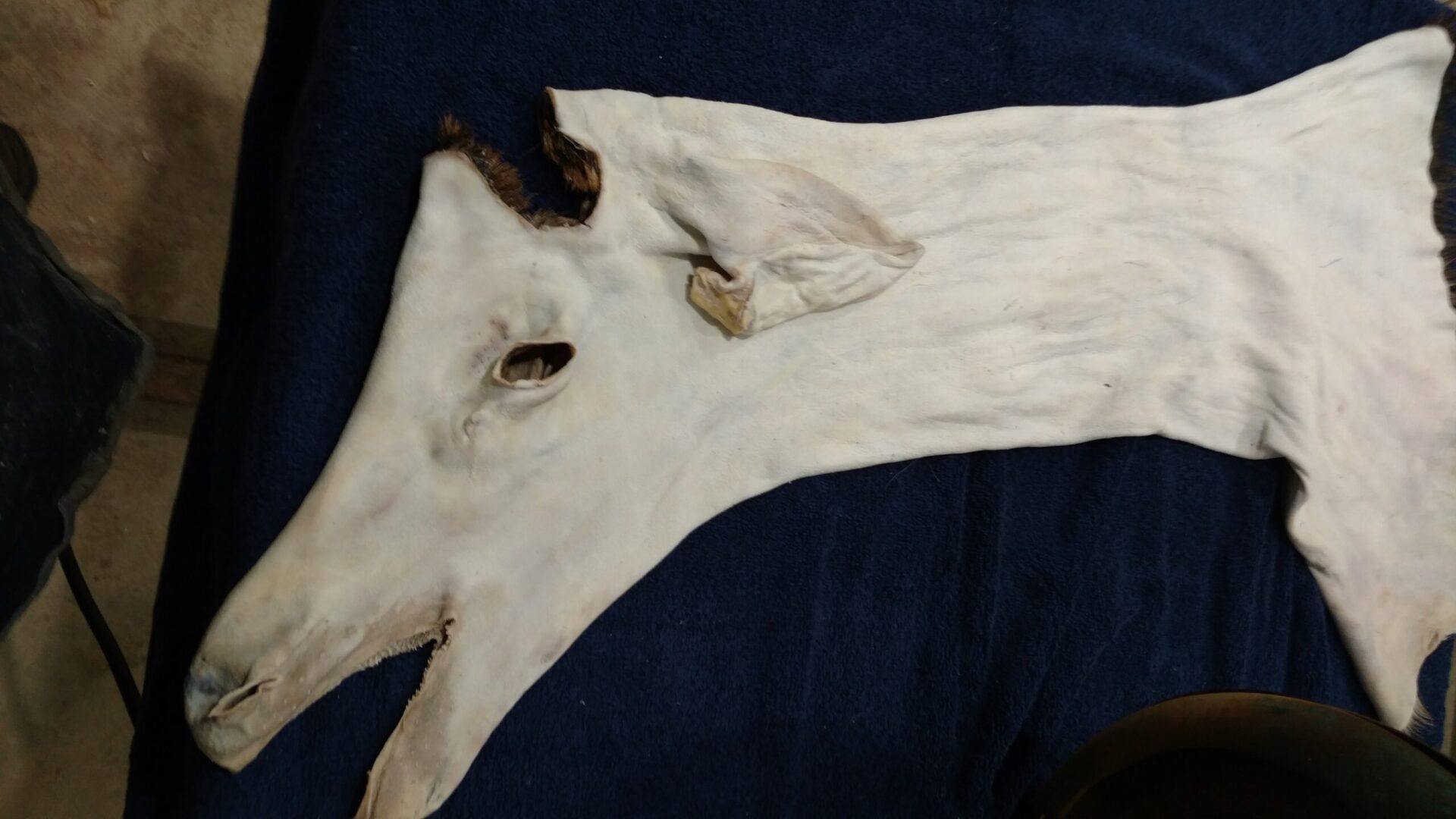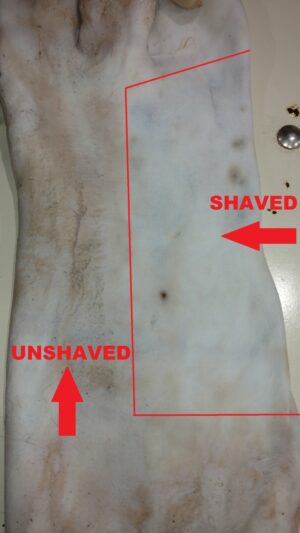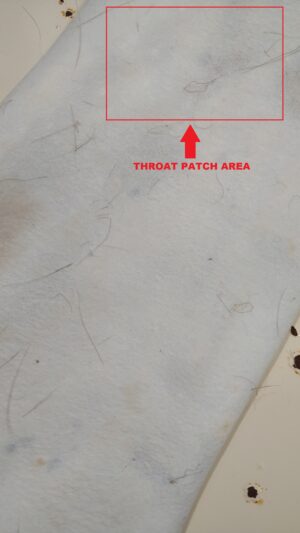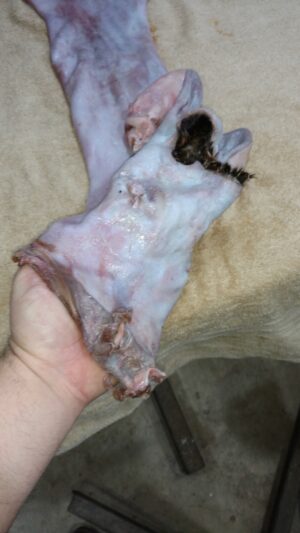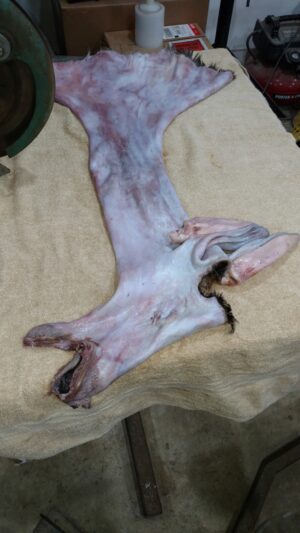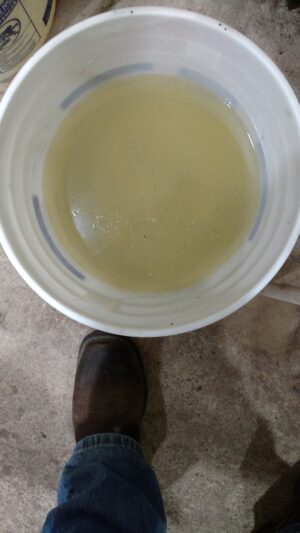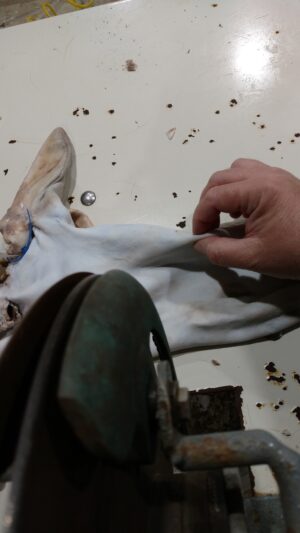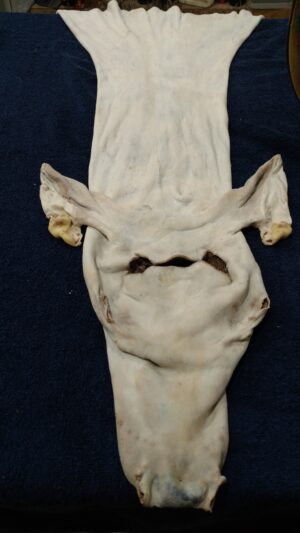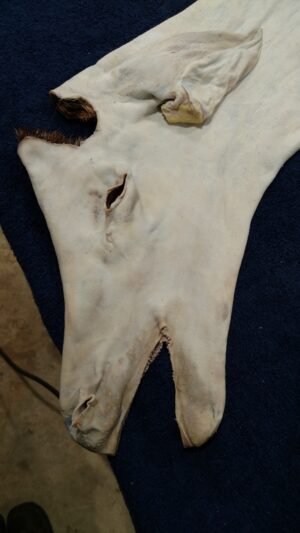By D. Price
So many times I am asked or either see posted on the internet, how do you know when your deer cape is shaved thin enough? This is an important question and not an easy one to answer with words. I often see or hear someone answer it with “When it turns blue that is thin enough.”
In this article I’m going to attempt to answer this question with less words and more photos. To start with the cape is just not going to suddenly go “POOF” and turn blue like a Smurf. This “Blue” answer can often confuse a newbie to the industry trying to find their way. So let me explain it a little differently.
To start with, the bluish color people often refer to is nothing more than the dark hair follicles beginning to show through the white skin as it gets thinner therefore causing a blue tint to the skin itself.
Now this does not hold true for the entire cape. There are several exceptions, one being all the hair on a whitetail is never all dark such as the throat patch, arm pit areas, belly areas and never depend on the blue color on an albino or piebald cape because you will have thin bald spots all over it.
Another area to watch out for is if there was deep bruising of the deer around bullet wounds, drag marks or other injuries.
The staining of the blood in the skin could penetrate as far as the outer layers of the dermis so there will be no dark follicles showing through a white skin.
I have seen many damages in these areas because of this very reason. Here is an example of a bruised area most likely from falling after being shot.
Okay, “feel” is always the best way to make sure you have a properly thinned and evenly shaved cape, “sight” is second on the list.
The first thing you need to get a properly thinned cape is a clean pickled skin.
Make sure to completely flesh and wash the cape before adding to your pickle.
You want to remove as much of the meat and body fluids as possible. This will leave you with a cleaner skin to work with as well as a cleaner pickle. This will keep your fleshing machine cutting smoother if there is no trash there to damage the cutting edge.
Once the cape has been in the pickle long enough to penetrate the skin it is time to start the thinning process.
As you are shaving you should constantly be feeling or pinching the skin checking the thickness as you go, making sure everything is nice and even, especially on the neck and shoulder areas. If you have seen my “Mastering the Fleshing Machine A-Z Plus” online video series you will notice me constantly pinching the skin for this very reason.
In the brisket and arm pit region of the skin it can be tricky, many capes need no thinning at all in these areas if they were properly fleshed at the start.
Once you get to the face it is more of a seeing what you are doing in cleaning up the nose, chin, muzzle and around the eyes.
The forehead and around the ear butts is going to be other “feel” areas. Behind the ear which is actually the top and back of the head is usually a fairly thick area that needs extra attention.
The forehead may appear thicker than it really is due to the extremely course thick hair in this area, so tread lightly here.
I hope this explanation along with the photos helps to explain this often asked question, “How do you know when your whitetail capes are thinned enough?”
As always, thanks for reading and you can reach me at d.price@outbacktaxidermy.net or 919 562 4280

